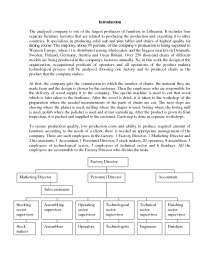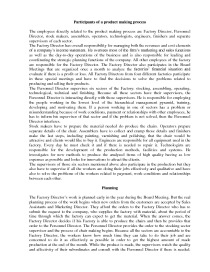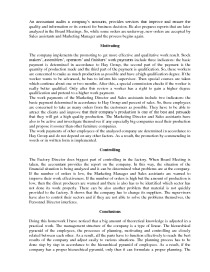Furniture Industry



Participants of a product making process. Introduction. The analyzed company is one of the largest producers of furniture in Lithuania. At first, the company gets the commission in which the number of chairs, the material they are made from and the design is chosen by the customer. To ensure production quality, low production costs and ability to produce required amount of furniture according to the needs of a client, there is needed an appropriate management of the company. Participants of a product making process. Planning. Motivating. Controlling. Conclusions.
The analyzed company is one of the largest producers of furniture in Lithuania. It includes four separate furniture factories that are related to producing the production and exporting it to other countries. It specializes in producing solid oak and pine tables and chairs of highest quality for dining rooms. The majority, about 95 percent, of the company’s production is being exported to Western Europe, where it is distributed among wholesalers and the biggest retailers in Denmark, Sweden, Finland, Germany, Austria and Great Britain. Over 250 thousand chairs of different models are being produced in the company's factories annually. So, in this work the design of the organization, occupational positions of operators and all operations of the product making technological process will be analyzed choosing one factory and its produced chairs as the product that the company makes.
At first, the company gets the commission in which the number of chairs, the material they are made from and the design is chosen by the customer. Then the employees who are responsible for the delivery of wood supply it to the company. The special machine is used to cut that wood which is later taken to the hothouse. After the wood is dried, it is taken to the workshop of the preparation where the needed measurements of the parts of chairs are cut. The next steps are shaving where the planer is used, milling where the shaper is used, boring where the boring mill is used, polish where the polisher is used and at last varnishing. After the product is given its final inspection, it is packed and supplied to the customer. Each step is done in separate workshops.












